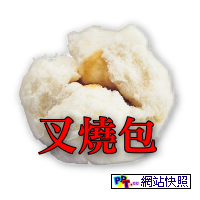愛護球棒的一朗
作者: abc12812 2012-09-25 21:21:13
http://tinyurl.com/8fcges8
MINNEAPOLIS — During a game for the Orix Blue Wave in Japan in 1999, Ichiro
Suzuki struck out and returned to the dugout unusually frustrated. In a fit
of anger, he destroyed his black Mizuno bat. Embarrassed, Suzuki wrote a
letter of apology to the craftsman who had made his bats by hand from Tamo
wood, grown on the Japanese island of Hokkaido. Such was the respect that
Suzuki felt for the process that created the bats, which he wielded with such
skill.
一朗過去在日本時 有次被三振後一怒之下把球棒打斷
事後一朗很愧疚的寫了封道歉信給製作球棒的工匠
Today, after a decade in the major leagues, Suzuki still displays that same
reverence on a daily basis, caring for his bats like Stradivarius violins.
While most players dump their bats in cylindrical canvas bags when they are
not using them, Suzuki neatly stacks his best eight bats inside a shockproof,
moisture-free black case that he keeps close by his locker at home and on the
road.
現在一朗還是一樣地珍惜球棒 他把最好的八支球棒放在防震防潮的箱子裡
像對待史特拉底瓦里小提琴一樣保護球棒
At the bottom of his bat case, which is made for him by Mizuno, the same
Japanese equipment manufacturer that still makes his bats, are two bags of
moisture-absorbing blue pellets, much like larger versions of the small
packets that come with some packaged goods. As the pellets absorb water they
turn pink and Suzuki can monitor the level of humidity by how quickly the
pellets change colors.
箱子裡有放除濕劑來控制濕度 濕度不對的話打擊感覺也會不對
“In Japan we take care of our instruments, our bats and our gloves,” Suzuki
said. “We take care of them well because these things are very important.”
一朗 "在日本 我們會照顧好球具 球棒和手套 因為這些用具很重要"
MINNEAPOLIS — During a game for the Orix Blue Wave in Japan in 1999, Ichiro
Suzuki struck out and returned to the dugout unusually frustrated. In a fit
of anger, he destroyed his black Mizuno bat. Embarrassed, Suzuki wrote a
letter of apology to the craftsman who had made his bats by hand from Tamo
wood, grown on the Japanese island of Hokkaido. Such was the respect that
Suzuki felt for the process that created the bats, which he wielded with such
skill.
一朗過去在日本時 有次被三振後一怒之下把球棒打斷
事後一朗很愧疚的寫了封道歉信給製作球棒的工匠
Today, after a decade in the major leagues, Suzuki still displays that same
reverence on a daily basis, caring for his bats like Stradivarius violins.
While most players dump their bats in cylindrical canvas bags when they are
not using them, Suzuki neatly stacks his best eight bats inside a shockproof,
moisture-free black case that he keeps close by his locker at home and on the
road.
現在一朗還是一樣地珍惜球棒 他把最好的八支球棒放在防震防潮的箱子裡
像對待史特拉底瓦里小提琴一樣保護球棒
At the bottom of his bat case, which is made for him by Mizuno, the same
Japanese equipment manufacturer that still makes his bats, are two bags of
moisture-absorbing blue pellets, much like larger versions of the small
packets that come with some packaged goods. As the pellets absorb water they
turn pink and Suzuki can monitor the level of humidity by how quickly the
pellets change colors.
箱子裡有放除濕劑來控制濕度 濕度不對的話打擊感覺也會不對
“In Japan we take care of our instruments, our bats and our gloves,” Suzuki
said. “We take care of them well because these things are very important.”
一朗 "在日本 我們會照顧好球具 球棒和手套 因為這些用具很重要"
作者: jarr2610 (噓累累) 2012-09-25 21:22:00
一朗傳說~~
作者: a98756538 (a98756538) 2012-09-25 21:23:00
在台灣 我們叫做這是永恆的承諾
作者: KINGTIGERX (細雨 河畔 擺渡人) 2012-09-25 21:24:00
朗神的親筆信耶…傳家寶!
作者: terop (琉璃獅子) 2012-09-25 21:24:00
傳說到了滿月的夜晚,一朗家的守衛會聽到琴房內傳出極強烈
作者: sinotrade (YAP) 2012-09-25 21:24:00
1有趣
作者: terop (琉璃獅子) 2012-09-25 21:25:00
的共鳴聲,既如虎嘯又似龍吟,在歇息後,總會聽到一陣物品掉落地面的聲音,其實更像是球棒掉到地上的聲音,真實情況為何,就不得而知了...
作者: terop (琉璃獅子) 2012-09-25 21:26:00
一朗回應:有嗎?我都睡很好!
作者: ClutchShot (ClutchShot) 2012-09-25 21:27:00
之前也有新聞說他不會把打擊手套放在口袋然後坐上去
作者: ClutchShot (ClutchShot) 2012-09-25 21:28:00
已經有點強迫症了吧
作者: sinotrade (YAP) 2012-09-25 21:30:00
一朗與虎
作者: mikeneko (三毛貓) 2012-09-25 21:31:00
棒球很多打擊小動作都是強迫症 但你不做就是會打不好
作者: FRX (がぬすぬ) 2012-09-25 21:36:00
之前不是還有人舔球棒的嗎? XDDD
作者: rie779 (這些鉛筆通通都是我的) 2012-09-25 21:36:00
有一個球員打球前會反反覆覆的一直弄手套 那個也是強迫症吧
作者: cd12631 (<(◥█◤△◥█◤)>) 2012-09-25 21:39:00
樓上說的是Nomar
作者: bkm1 (殷仔 加油!!!) 2012-09-25 21:40:00
樓上說的是賈西亞帕拉~而且他的雙腳會一直交互點....
作者: kusami (>.^) 2012-09-25 21:51:00
Nomar那真的好可愛 有球評還在他做的時候一步一步live解釋
作者: kusami (>.^) 2012-09-25 21:53:00
而且他手套已經帶好了後來是比動作 每看一球都要再來一次
作者: mygoing (高雄哪裡買calume) 2012-09-25 22:04:00
他的動作真的需要超慢動作才看的清楚 活真人慢動作教學
作者: maxLOVEmimi (touch Me!!) 2012-09-25 22:20:00
一朗傳說又增一筆 一朗:我的球棒是有生命的
作者: micotosai (日本語が半人前の俺様) 2012-09-25 22:23:00
有一次主審為了讓回來得分跑者不要受傷把一朗的球棒踢到
作者: micotosai (日本語が半人前の俺様) 2012-09-25 22:24:00
邊邊去,一朗看到就很生氣的狂罵那個主審
作者: saidon ( ) 2012-09-25 22:59:00
作者: LikeaNew (00994411) 2012-09-25 23:03:00
一朗:在日本,打者拿著球棒大喊「卍解」會有事情發生的
作者: akiralee 2012-09-25 23:04:00
一朗從還在歐力士時就只使用這位叫久保田五十一的工匠
作者: akiralee 2012-09-25 23:05:00
所製作的球棒,以前還看過NHK為這位工匠拍的記錄片
作者: akiralee 2012-09-25 23:09:00
可以參考這篇日文報導 http://tinyurl.com/8bj4uo5
作者: popoliii (婊子的男人) 2012-09-25 23:19:00
所以一朗的球棒都是從日本訂製再空運到美國的囉@_@ ?
作者: popoliii (婊子的男人) 2012-09-25 23:20:00
運動員對 習慣 感覺都蠻注重的 固定的的節奏和運作機制
作者: popoliii (婊子的男人) 2012-09-25 23:21:00
才能幫助其穩定心情 進入打擊或投球的心境之中
作者: cd12631 (<(◥█◤△◥█◤)>) 2012-09-25 23:52:00
以Ichiro的級數 日本訂製空運美國滿合理的啊
作者: PlayStation3 (超級喜歡于小文) 2012-09-26 01:19:00
KUBODA球具很貴(溜
作者: yisiang92 (泰山收費站) 2012-09-26 11:32:00
川崎表示:
作者: kadasaki (K~) 2012-09-26 12:33:00
嗯~
